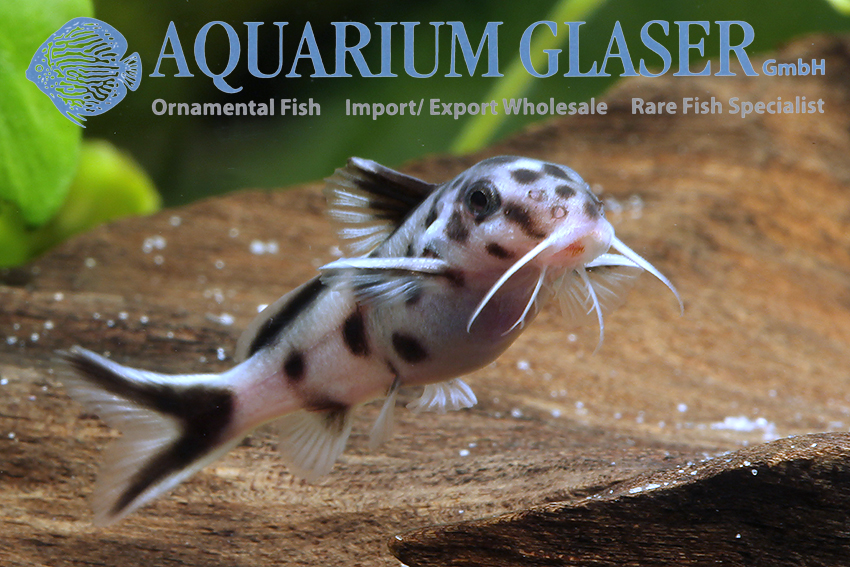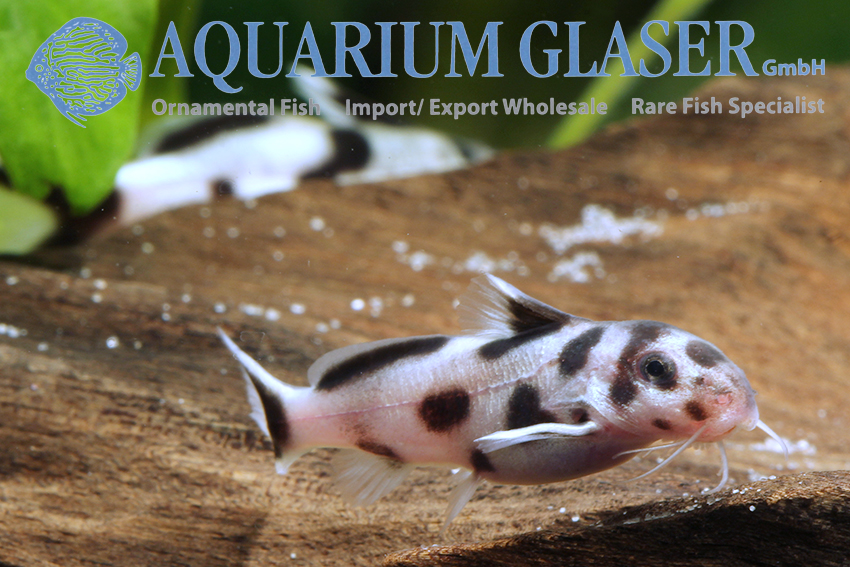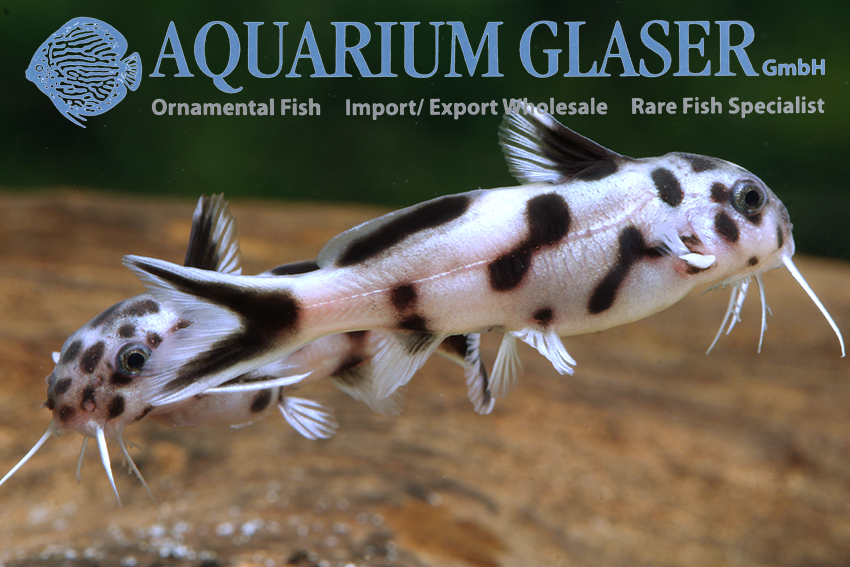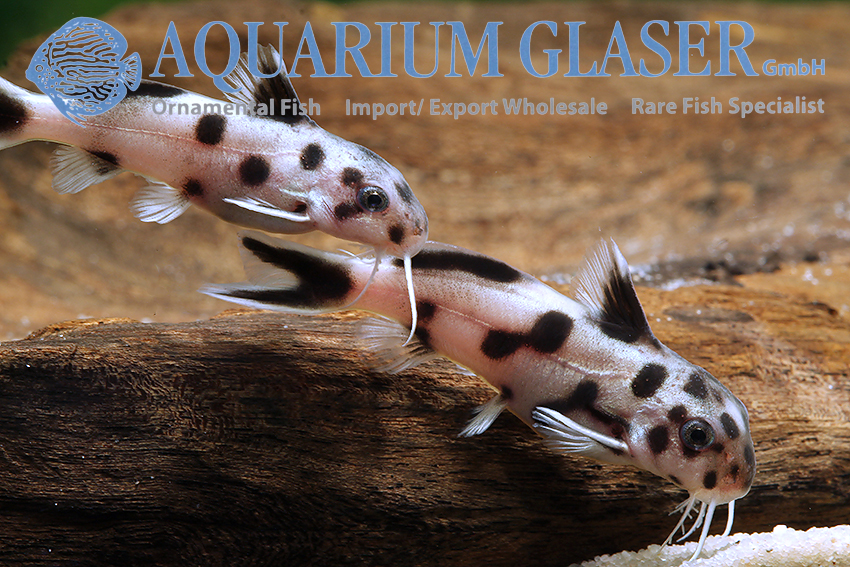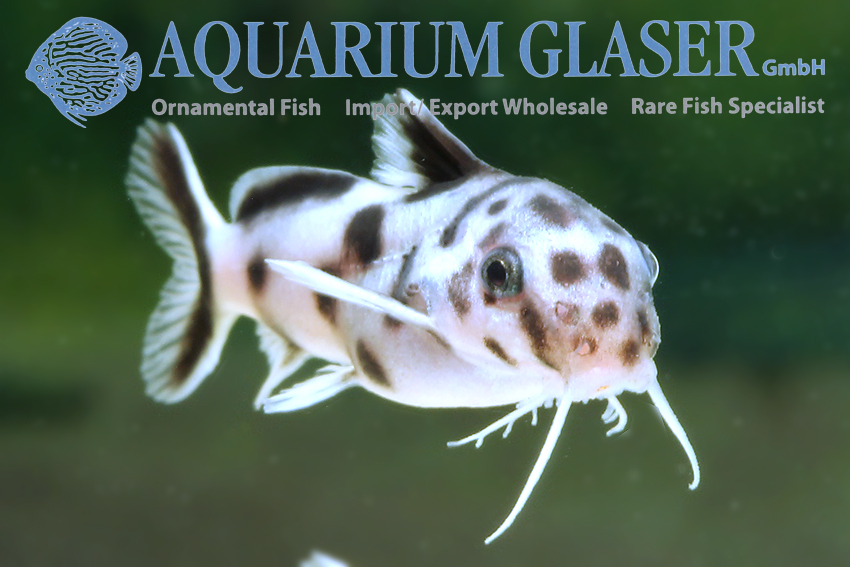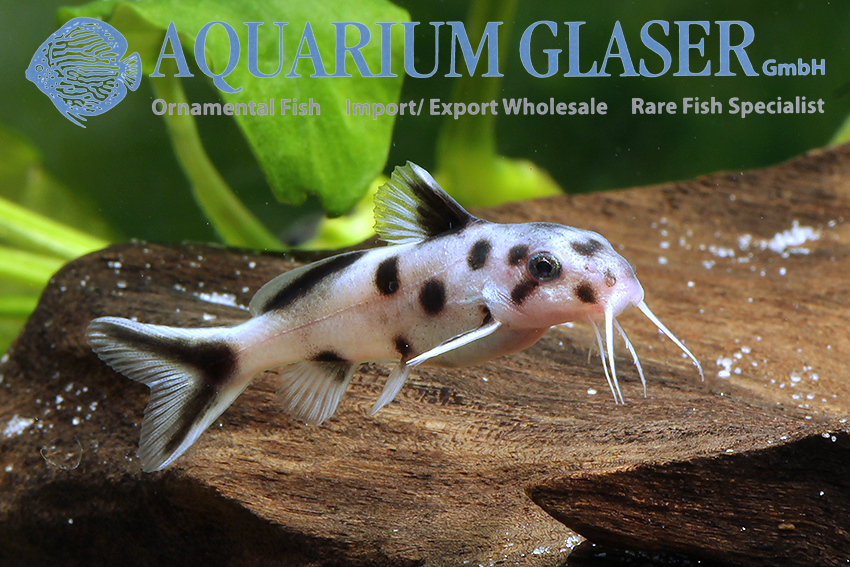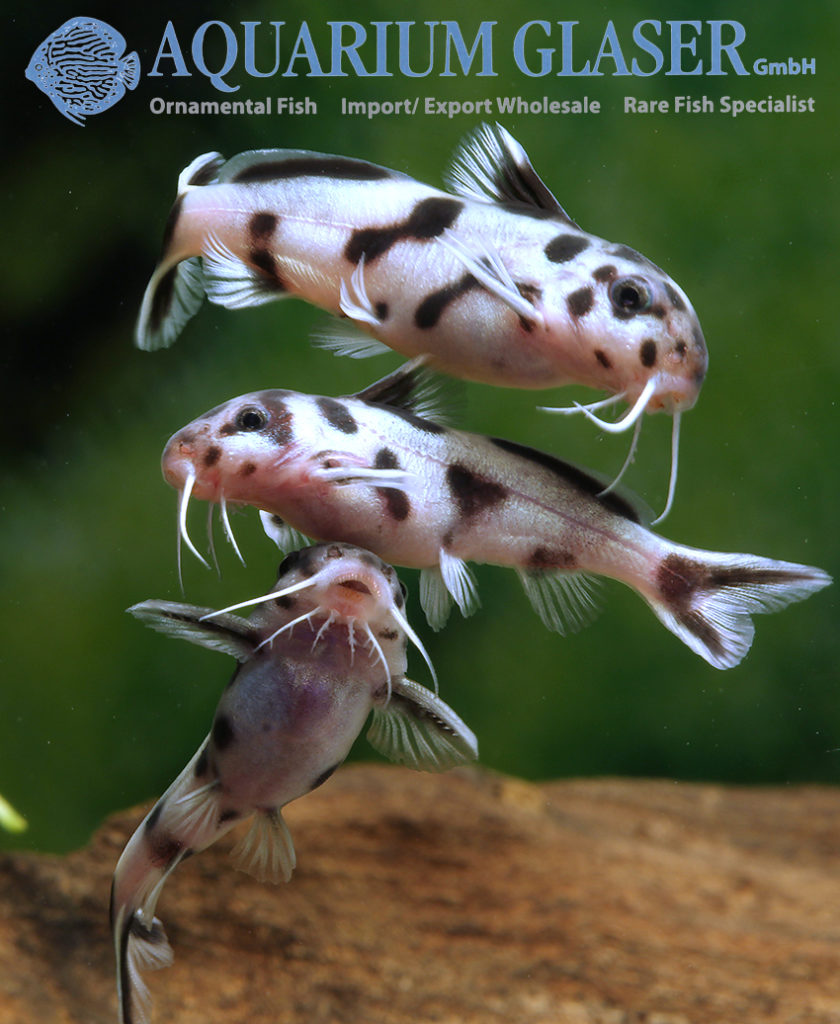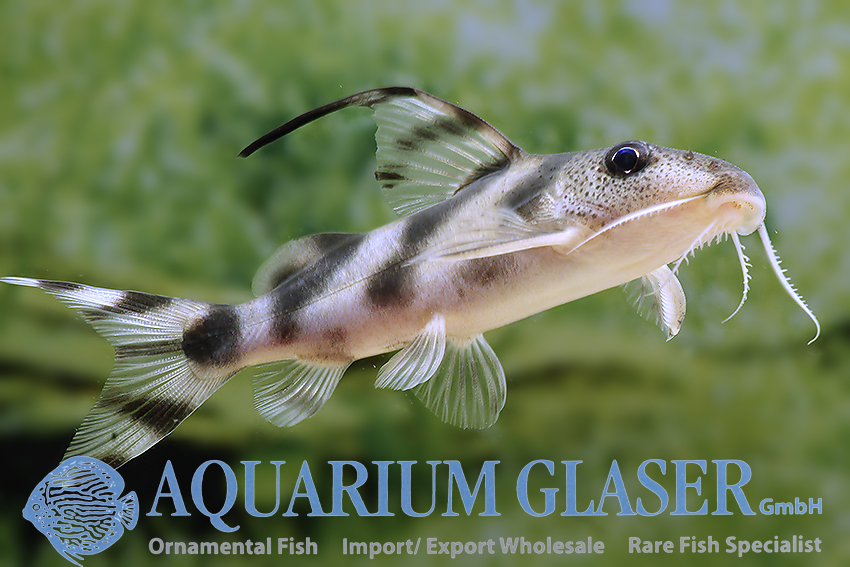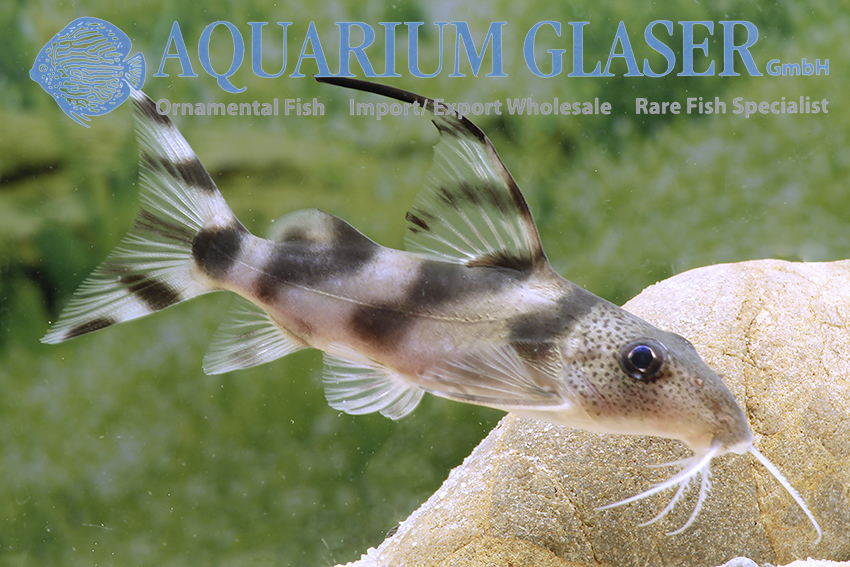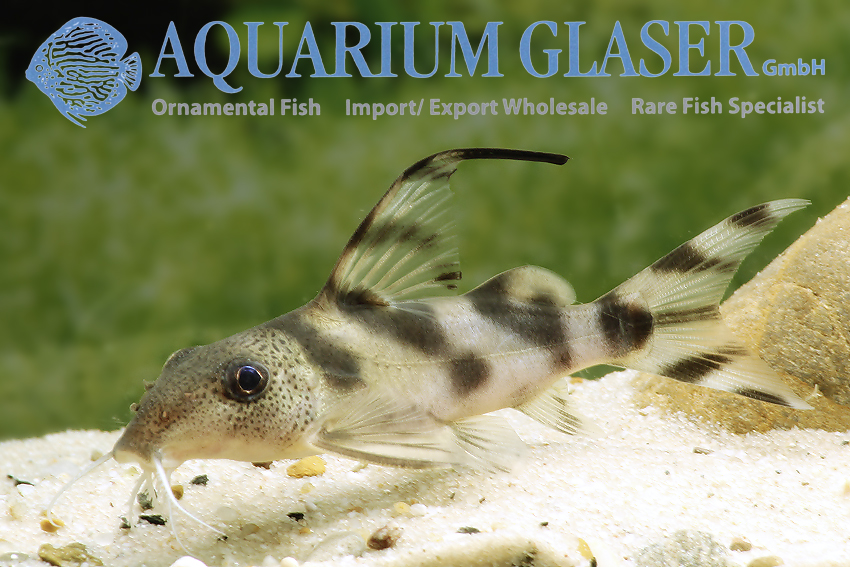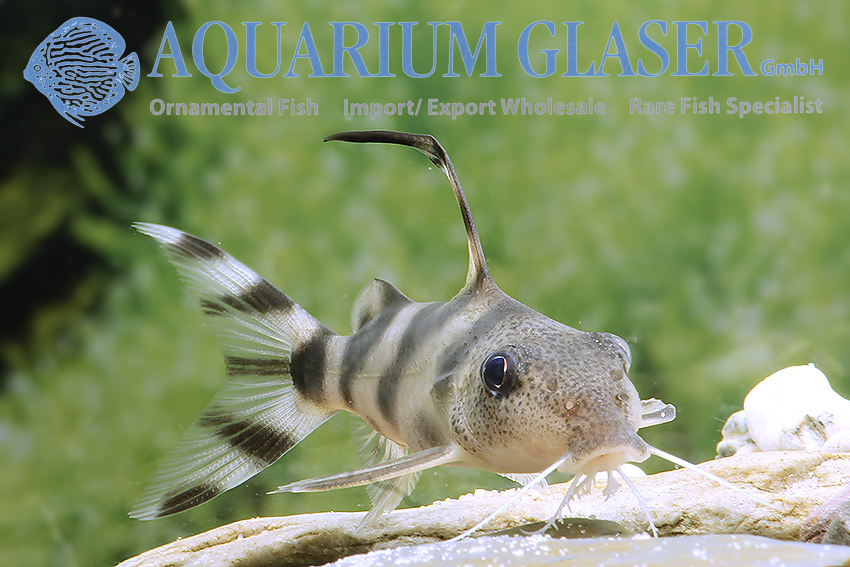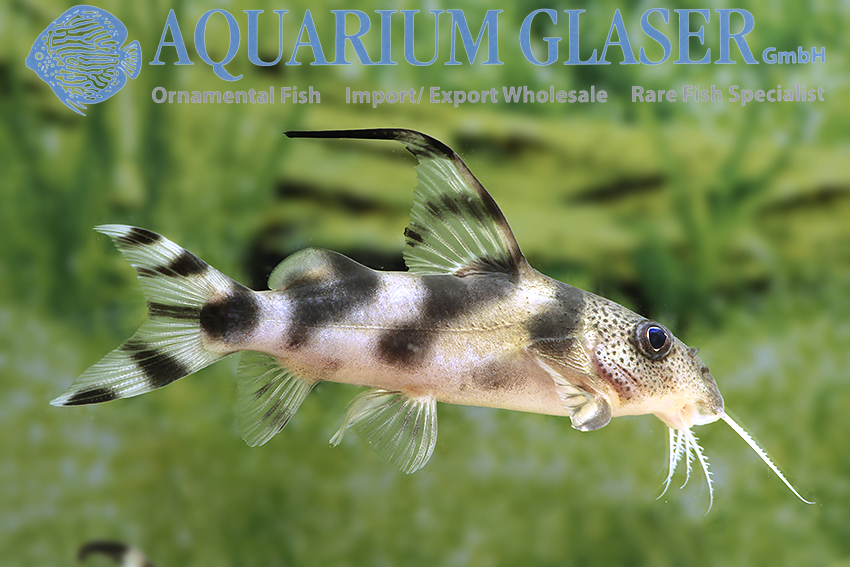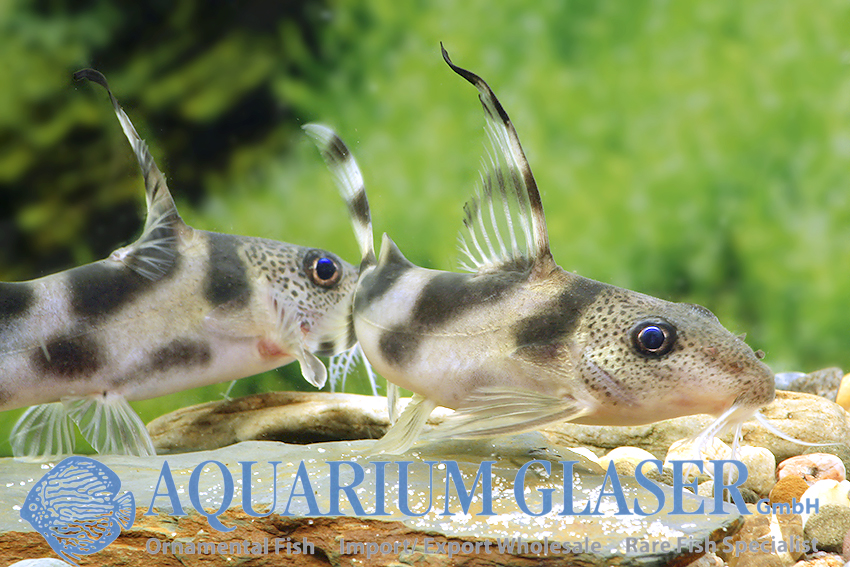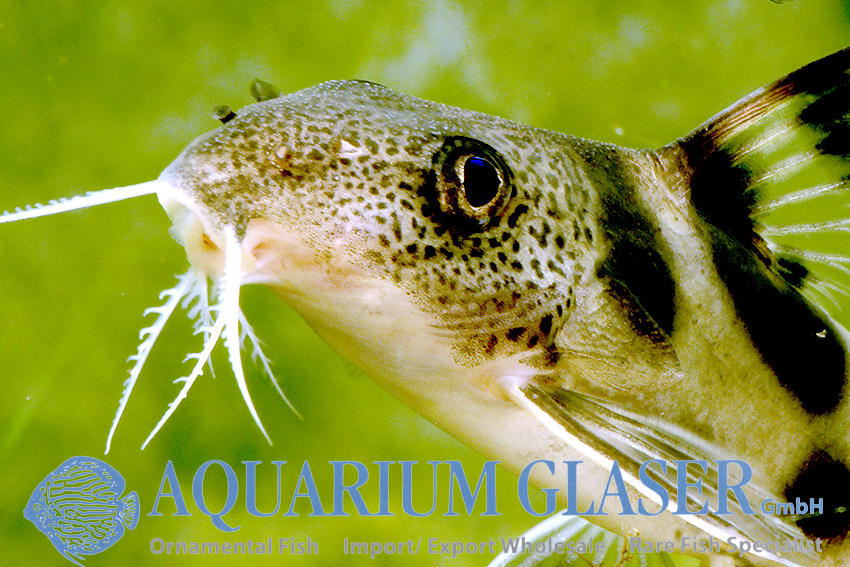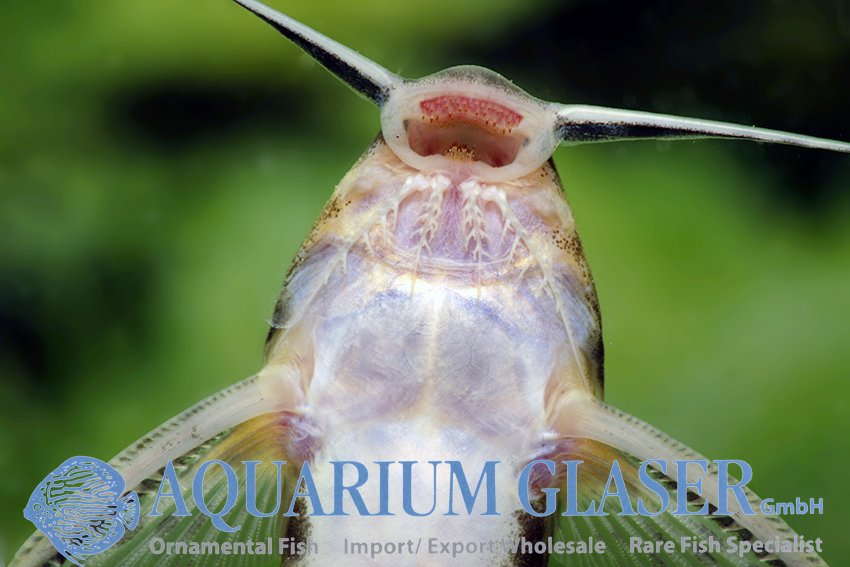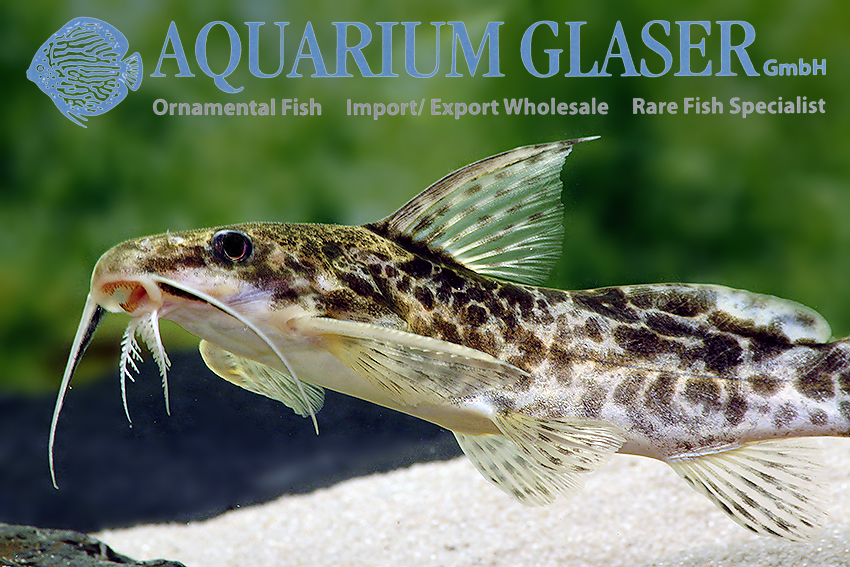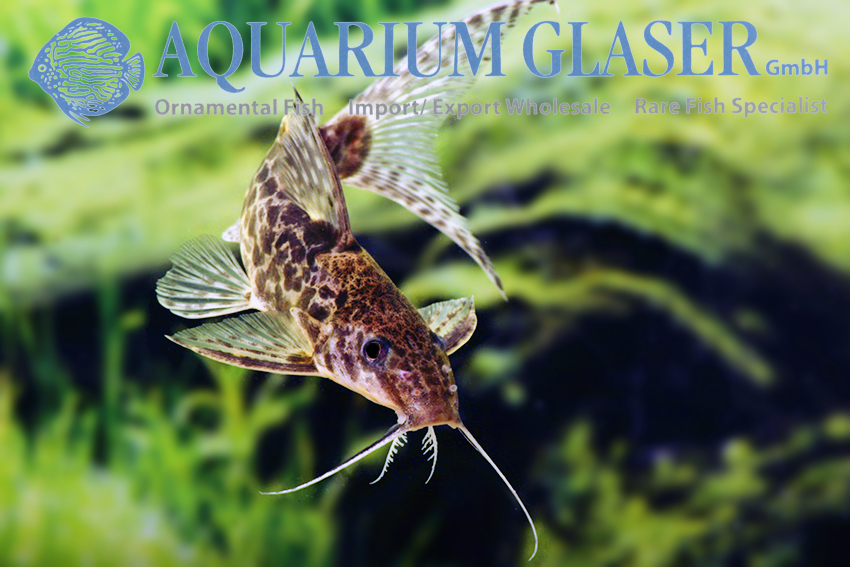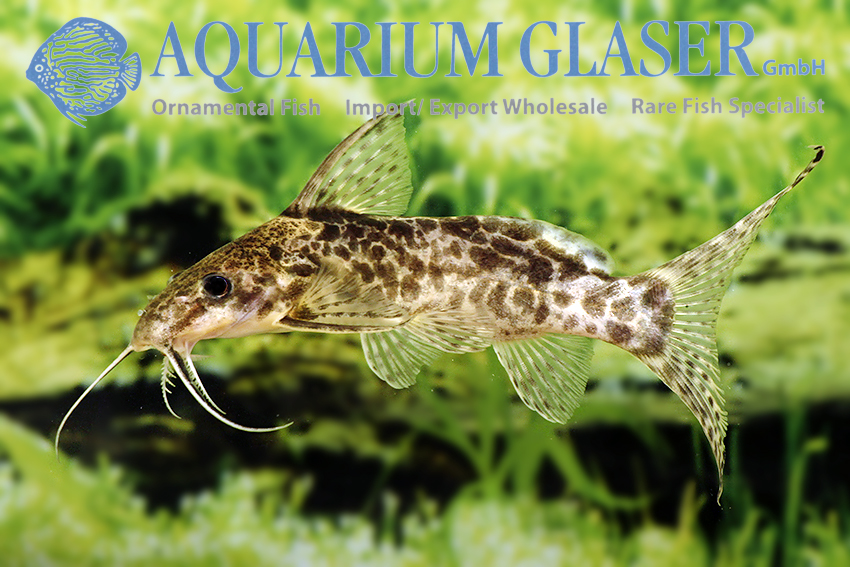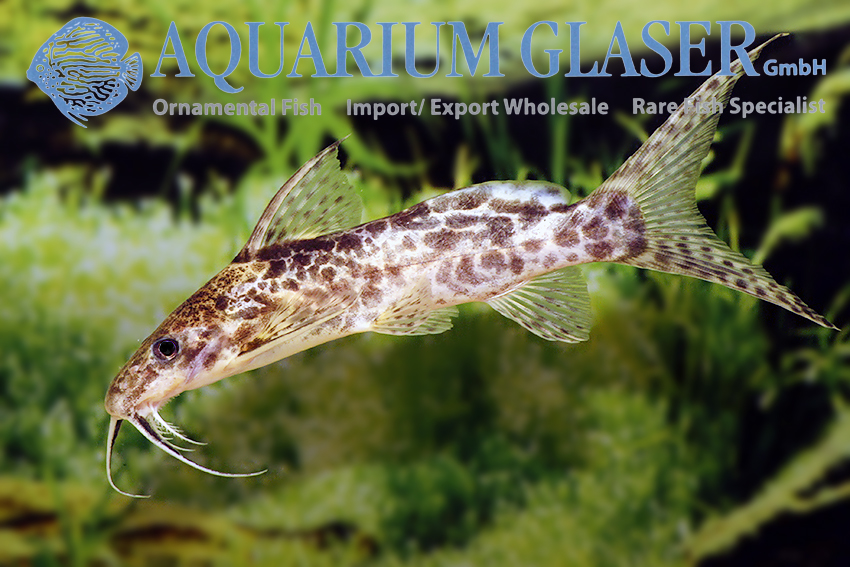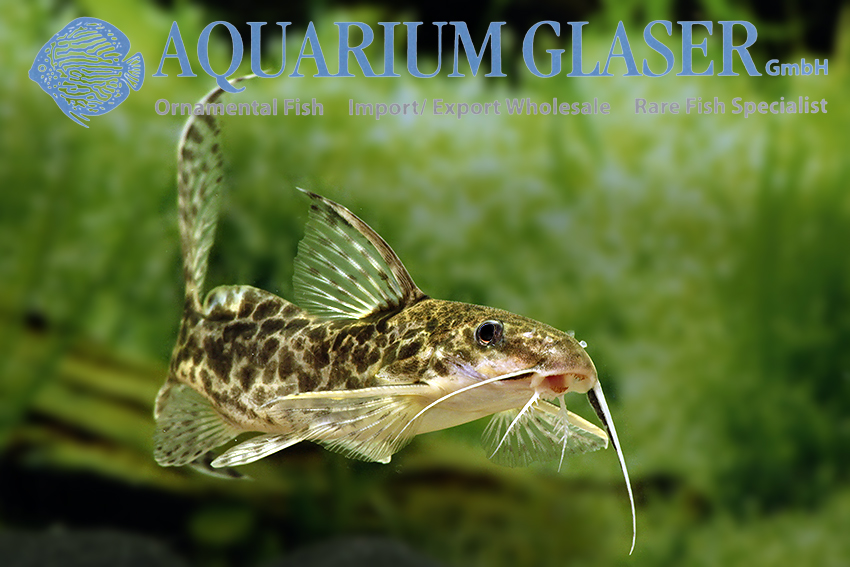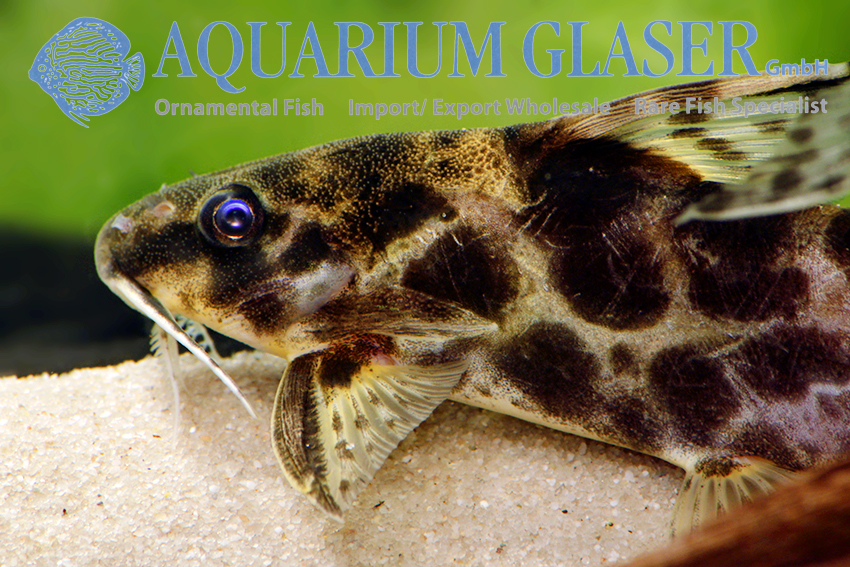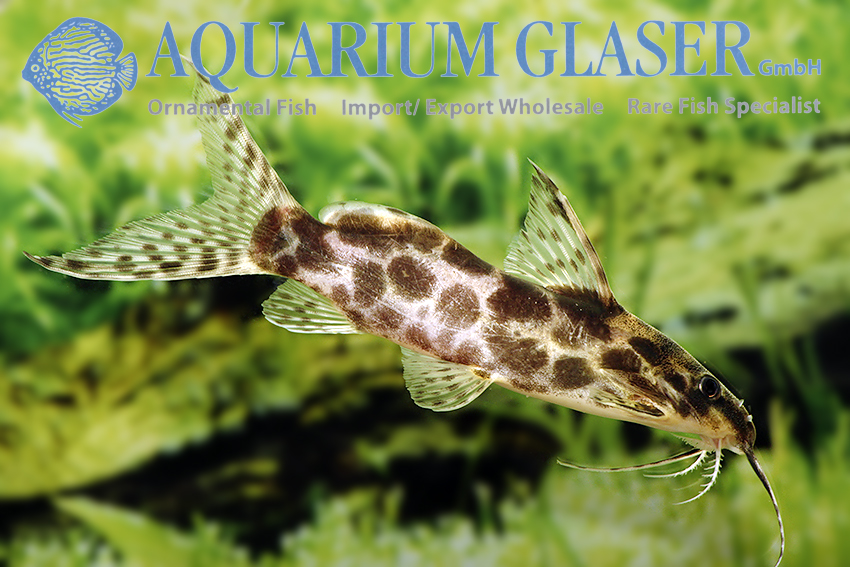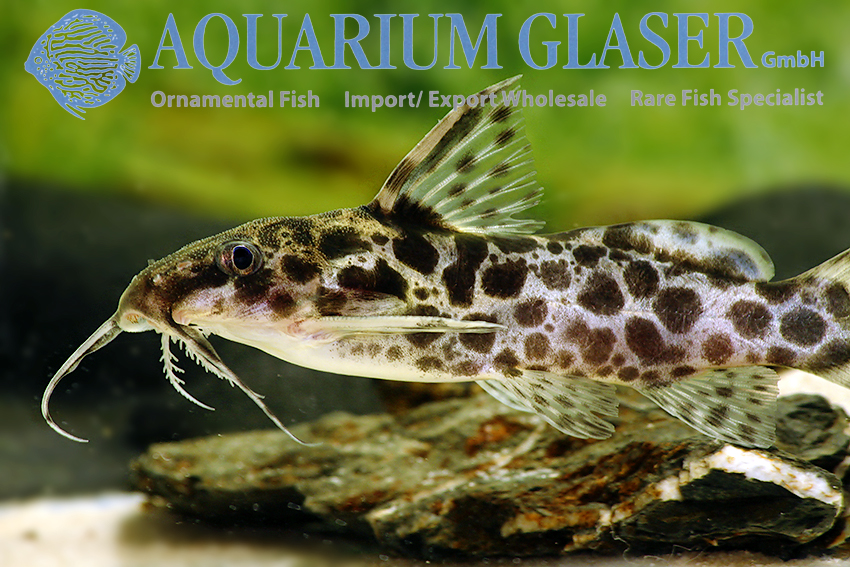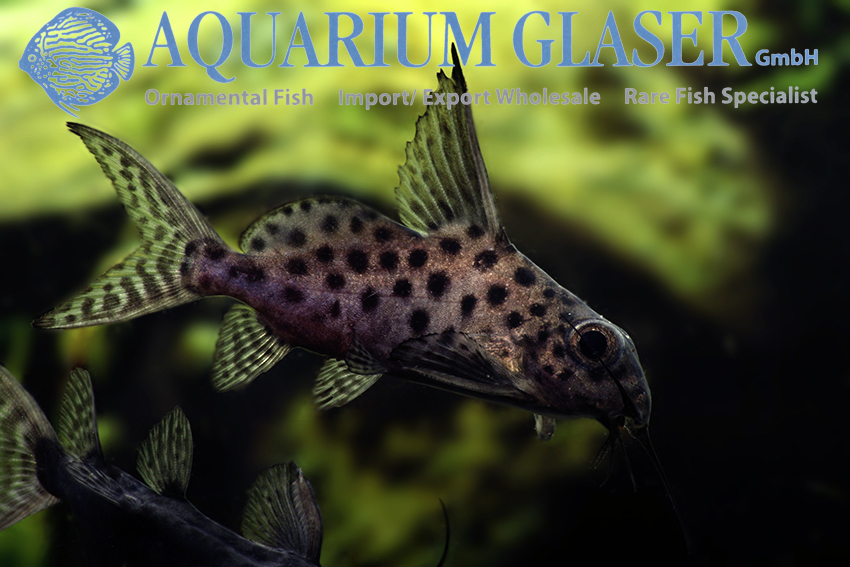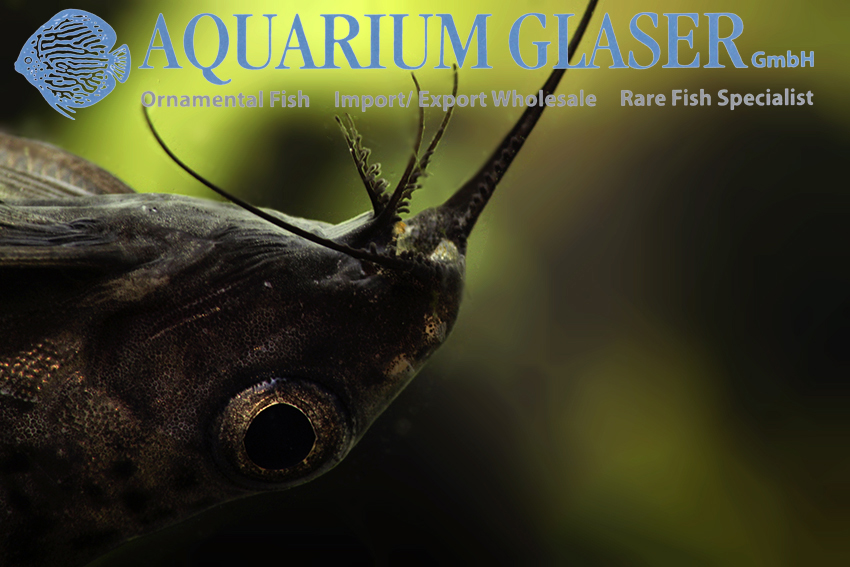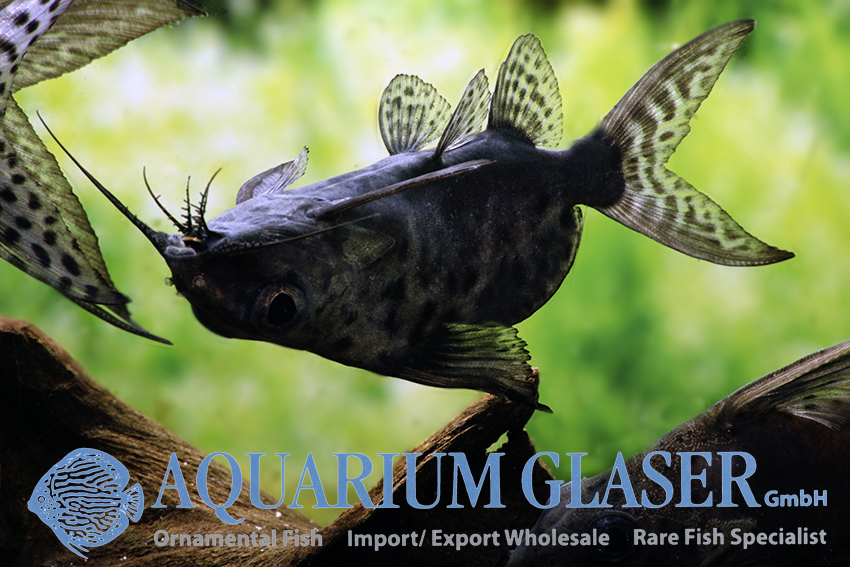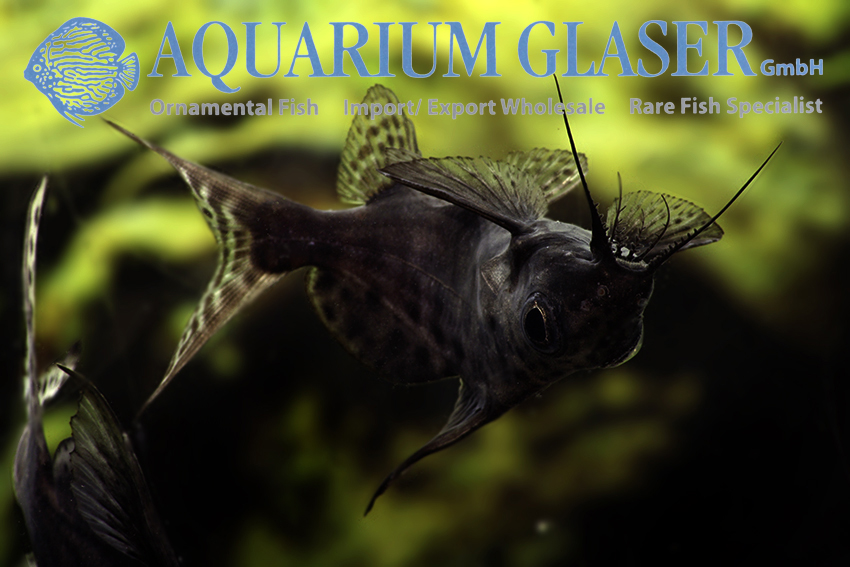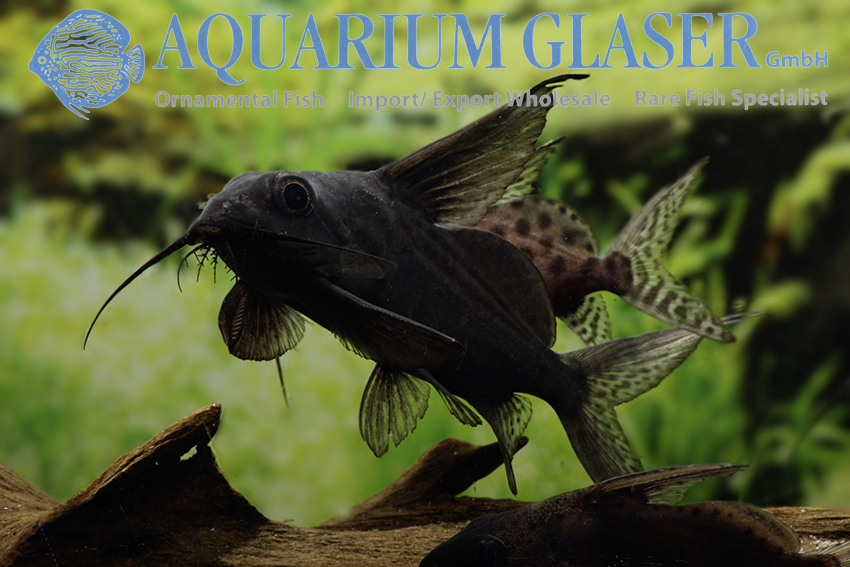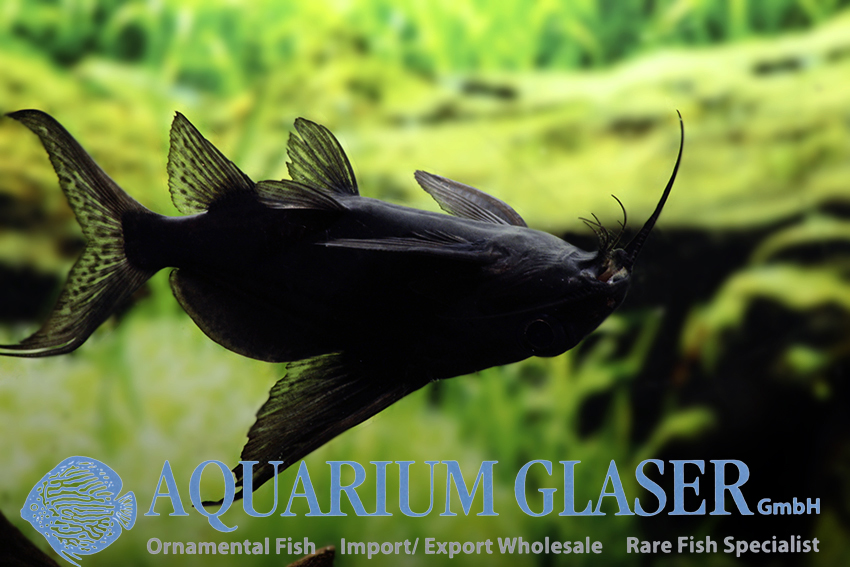Some time ago a small Synodontis appeared in the hobby, which is called “White Polli”. But the “White” has little in common with the actual Synodontis polli. The dorsal fin spine of “White” is bicolor, black in the lower half, white in the upper half. This species is distributed in the hobby almost exclusively as offspring. The strain goes back to animals imported by the Dutchman René Krüter from Lake Tanganyika near Mpulungu in Zambia. Krüter bred the animals with good success and spread them in this way.
The “White Polli” remains small, it hardly grows beyond 8-10 cm in length and is not a cuckoo catfish, but reproduces “normally”. Although there is hardly any doubt that it is a scientifically undescribed species occurring in the wild, it has also undoubtedly been heavily bred in recent years and selected for very light, even white body color, which is why the offspring look only very little like the original wild specimens. Adult specimens show a small occipital hump, which caused Erwin Schraml to call the animals “Humphead Synodontis”. Probably, however, the name “White Polli” (or the other way around, “polli White”) cannot be eliminated.
We currently offer the “White Polli” as a cute offspring in 3-4 cm length. You should always keep these fish in company of conspecifics, because they are really very sociable!
For our customers: the fish have code 185701 on our stocklist. Please note that we supply only wholesale.
Text & photos: Frank Schäfer





